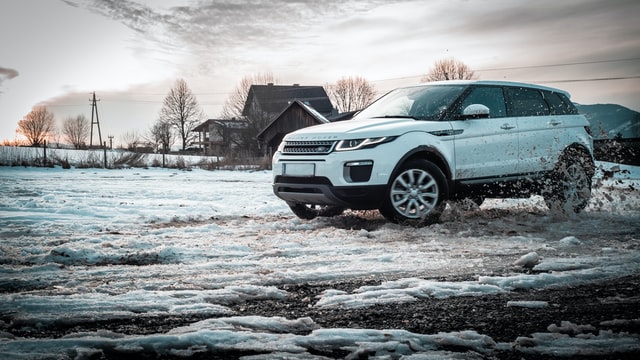When it comes to the Great British winter, there’s one thing we can more or less count on, and that’s poor weather. From rain and wind to ice and sometimes even snow, the wintry weather can be cold, bitter and in some cases, even harmful to our vehicles. From the corrosive effects of salt and road dirt to the struggle of dealing with icy windscreens in the morning, winter can be one of the most unpleasant times for drivers, particularly those of us making a daily commute. Thankfully, there are things you can do to protect your vehicle in the coming months, and we’ve compiled our top tips to get you started.
Don’t Skip Washing Your Car
If you find yourself reluctant to wash your car over the winter months, you certainly wouldn’t be alone but it is actually one of the most important times to keep on top of your car’s cleanliness. It can seem like a waste of time washing your car, only for it to rain or snow again by the evening but giving your car a good clean every now and then can help to improve not only your car’s quality but even the quality of your driving.
Dirt, grime and debris can build up on the headlights, windscreen, mirrors and windows of your car, dimming the lights and making visibility more difficult. By keeping on top of cleaning, you can ensure that visibility remains high. Similarly, road salt that kicks up from the ground as you drive can be corrosive and damage the paint, clear coat, exhaust, brake lines and the underside of your car. Keeping the car clean and washing regularly will reduce or prevent bodywork damage.
Keep It Waxed
As well as cleaning, getting your car waxed or waxing it yourself will add an additional layer of protection against dirt and salt from the road. Keeping the car’s paint in good condition will not only give you something to be proud of, but can make it easier to sell your car for a higher price in the future if you choose to. Bodywork issues are fixable, but by waxing your car, you can prevent this as much as possible.
Avoid Deep Puddles
Deep puddles and snow can cause more damage to your vehicle than you might initially realise. While puddles are mostly harmful on their own, you can never be sure what is underneath the layer of water or just how deep it is. Puddles can be home to foreign objects that might damage your tyres, or might simply be deeper than you think and cause damage if you approach it too fast. Hitting potholes can cause damage at the best of times, including bent rims, damage to the suspension and can even knock your steering out of alignment, as well as exhaust damage and even damage to the engine itself that will need repair. Avoiding puddles, particularly those that appear deep, is the best way to protect your car from this risk.
Use A Car Cover When Things Are Icy
There’s nothing worse than spending half an hour in the morning before your commute scraping ice off of your windscreen, handles and more. While there are plenty of tips out there for quickly getting rid of ice without damaging your windscreen, we find that the best way to not only avoid ice build up, but to also protect your car from snow or other adverse weather, is to simply invest in a car cover. This is particularly useful if you aren’t using your car regularly over the winter period. The cover not only keeps snow and ice from sticking to your vehicle, but it also keeps it well insulated and can go a fair way to preventing any broken or iced-over pipes and electrics within your vehicle, meaning that you’ll be ready and raring to go as and when you need your car.
Touch Up Any Chips
Chips in the car’s paint and bodywork are often unavoidable, and now is the ideal time to get them fixed. Bodywork repairs will not only have your vehicle looking good as new again, but will also act as a form of protection for the car too. When there are chips in the paintwork, you risk rust and corrosion building on the exposed metal so by getting them fixed and covered up before the weather really sets in, you give the paintwork a better chance of lasting through the winter.
Adjust Your Driving
Finally, one of the best and most important ways to protect your car during the winter is to simply adjust how you drive. Keeping a bit more distance between you and the cars around you can give you ample stopping distance in poor weather while also reducing how much dirt and debris your car is subject to as it’s kicked up by the car in front. By giving more space, you can also keep your eye out for puddles and potholes and avoid any damage that way.
For more information about keeping your car safe over winter and how we can help with any issues you might already have, get in touch with a member of our team, today.

